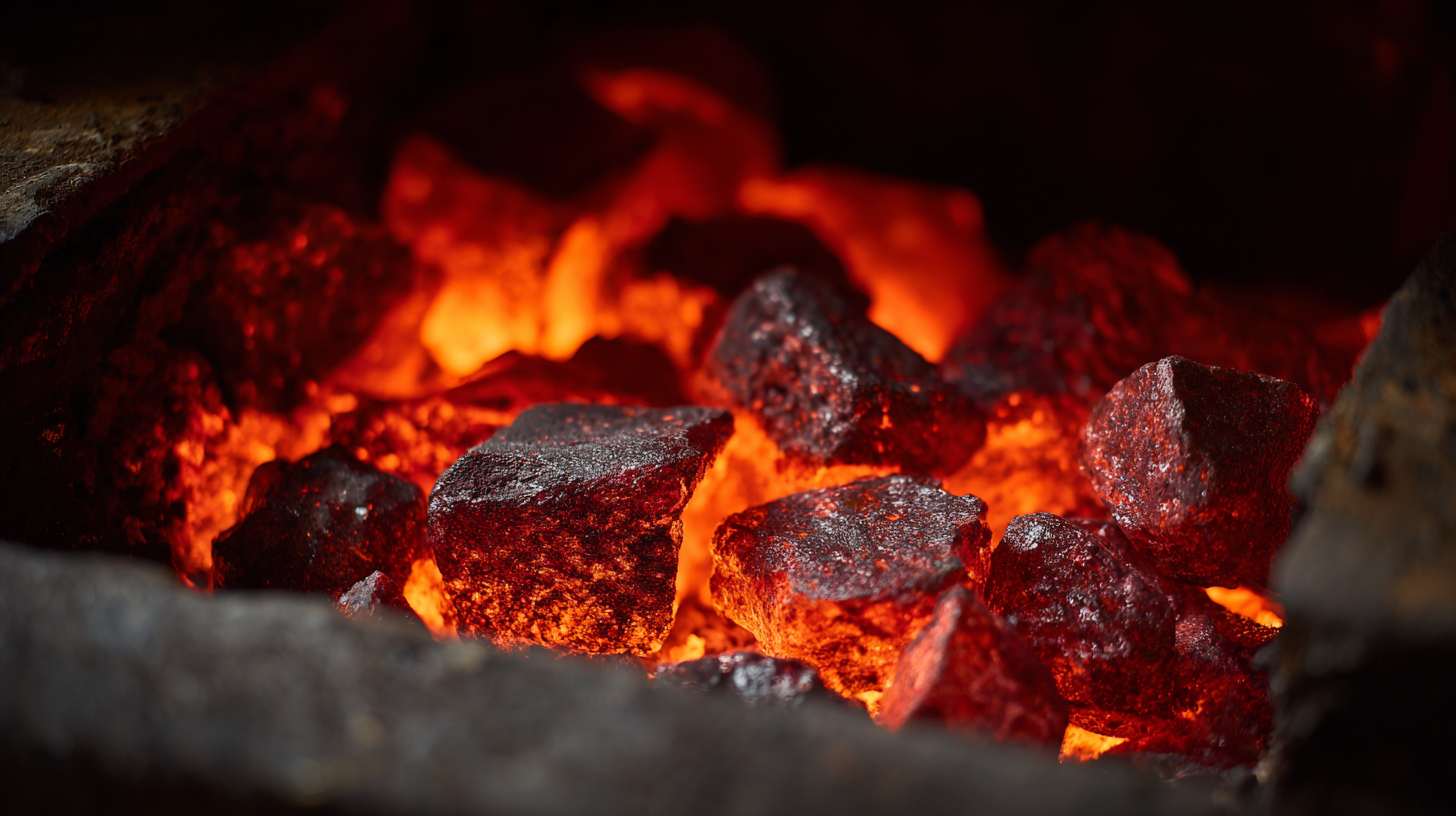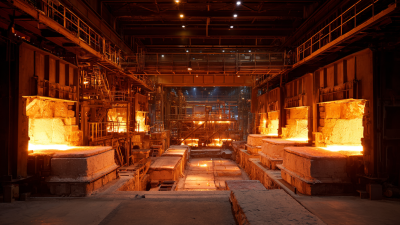Leave Your Message
In recent years, the demand for advanced materials capable of withstanding extreme thermal conditions has surged, particularly within industries such as ceramics, glass, and metallurgy. Among these high-performance materials, the "Corundum Mullite Sagger" has emerged as a pivotal solution for enhancing production efficiency and product quality in high-temperature applications. According to a report by Market Research Future, the global ceramic market is projected to reach a value of $380 billion by 2025, driven by the need for durable and reliable components in various sectors. The unique composition of corundum and mullite not only provides exceptional thermal stability but also improves resistance to thermal shock, making them indispensable in processes requiring prolonged exposure to elevated temperatures. As industries continue to innovate and push the boundaries of material science, understanding the secrets behind Corundum Mullite Saggers will be crucial in revolutionizing high-temperature applications and shaping the future of advanced manufacturing.

Corundum mullite saggers are critical components in high-temperature applications, particularly in ceramics and metal industries. Their unique composition, primarily of corundum (Al2O3) and mullite (3Al2O3·2SiO2), provides exceptional thermal stability and mechanical strength. These materials are capable of withstanding extreme temperatures, often exceeding 1600°C, without significant deformation or degradation. This ability to maintain structural integrity at high heat makes corundum mullite saggers ideal for processes such as sintering and firing where consistent support for delicate materials is crucial.
In addition to their thermal resilience, these saggers exhibit low thermal expansion and excellent thermal shock resistance. This means they can absorb rapid temperature changes without cracking, which is a vital characteristic in industrial processes where thermal cycling is common. Their chemical stability in the presence of various fluxing agents further enhances their suitability for high-temperature applications, allowing for a wide range of uses across different industries. The combination of these key properties positions corundum mullite saggers as an indispensable asset in optimizing efficiency and reliability in high-temperature manufacturing processes.
Corundum mullite saggers have emerged as a game-changer in high-temperature industrial applications, offering distinct benefits that enhance production efficiency and product quality. They exhibit remarkable thermal stability and resistance to thermal shock, making them ideal for use in environments subjected to rapid temperature fluctuations. Recent studies highlight that the incorporation of refractory materials like corundum and mullite can significantly improve the durability of kiln furniture. For instance, the use of high-alumina content in saggers can withstand temperatures exceeding 1400°C, positioning them as a reliable choice for the ceramics and glass industries.

Moreover, the development of advanced refractory formulations has paved the way for utilizing industrial waste in the production of high-performance materials. Research has shown that blends incorporating waste products not only reduce environmental impact but also result in cost-effective solutions for manufacturers. By optimizing the compositions of corundum and mullite-based saggers, companies can achieve up to a 20% increase in thermal efficiency, which is crucial for energy-intensive processes in industries such as glass manufacturing and metal processing. This innovative approach not only supports sustainability goals but also provides superior performance characteristics, reinforcing the value of corundum mullite saggers in modern industrial settings.
When selecting the right corundum mullite saggers for high-temperature applications, it’s essential to consider several key factors. First, evaluate the thermal stability required for your specific process. High-quality corundum mullite saggers offer exceptional resistance to thermal shock, making them ideal for fluctuations in temperature that occur during heating and cooling cycles. Look for products with a high alumina content, as these will provide enhanced durability and performance.
Next, assess the size and shape of the saggers to ensure they fit your operational requirements. The dimensions should correspond to the physical dimensions of the items being fired, as well as the design of your kiln or furnace. Adequate support inside the sagger is crucial to prevent warping or cracking under heavy loads. Additionally, consider the specific applications, such as ceramics or metallurgy, as different industries may require different properties in their saggers. By carefully examining these aspects, you can select corundum mullite saggers that optimize performance and enhance the efficiency of your high-temperature processes.
| Property | Value | Importance |
|---|---|---|
| Thermal Shock Resistance | High | Ensures durability under rapid temperature changes |
| Max Operating Temperature | 1500°C | Crucial for high-temperature processes |
| Flexural Strength | 30 MPa | Provides structural integrity under load |
| Chemical Composition | Al2O3 70%, SiO2 30% | Affects thermal properties and chemical stability |
| Porosity | 5% | Influences heat retention and weight |
| Manufacturing Technique | Isostatic Pressing | Enhances uniform density and performance |
The longevity of corundum mullite saggers is crucial for their performance in high-temperature applications, such as those found in the ceramics industry. According to the latest data from the International Journal of Applied Ceramics Technology, proper maintenance practices can extend the lifespan of these saggers by up to 30%. Maintaining optimal firing conditions and regularly inspecting the saggers for wear and tear are essential steps. Managing temperature fluctuations and ensuring even heat distribution can prevent premature degradation of the material, which is known for its thermal stability and high resistance to thermal shock.
Additionally, routine cleaning and careful handling during loading and unloading operations are vital in maintaining the integrity of corundum mullite saggers. The American Ceramic Society highlights that contamination from kiln residues can significantly impact the structural integrity and overall performance of saggers over time. Implementing a structured maintenance schedule that includes regular inspections and cleaning cycles has been shown to minimize repair costs by an estimated 25%, ensuring that these essential components continue to function efficiently in demanding high-temperature environments.

Corundum mullite saggers are gaining attention for their innovative designs that significantly enhance performance in high-temperature applications. These saggers, made from a composite of corundum and mullite, combine excellent thermal stability and mechanical strength, making them ideal for industries such as ceramics and glass manufacturing. The innovative design features include optimized geometries that facilitate better heat distribution and minimize thermal stress, resulting in prolonged service life and reduced failure rates.
Furthermore, advancements in manufacturing techniques have allowed for the customization of corundum mullite saggers to meet specific operational requirements. Enhanced features such as advanced thermal insulation and tailored porosity improve efficiency and energy savings during firing processes. As these saggers evolve, they not only support the high demands of extreme temperatures but also contribute to the sustainability of production methods. Embracing these innovative designs paves the way for revolutionary changes in high-temperature applications, ensuring the reliability and performance needed in today's competitive market.
This chart illustrates the performance of different designs of corundum mullite saggers in high-temperature applications. The data showcases the thermal shock resistance and mechanical strength of various innovative designs, highlighting their optimized performance in extreme environments.






